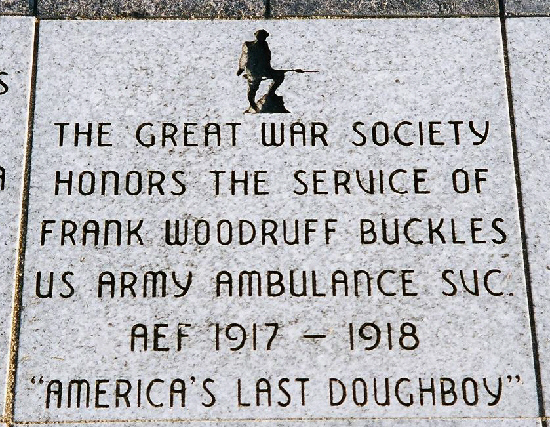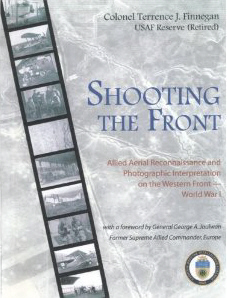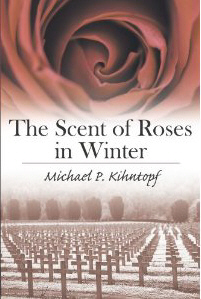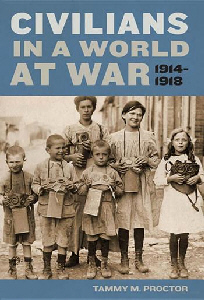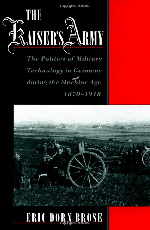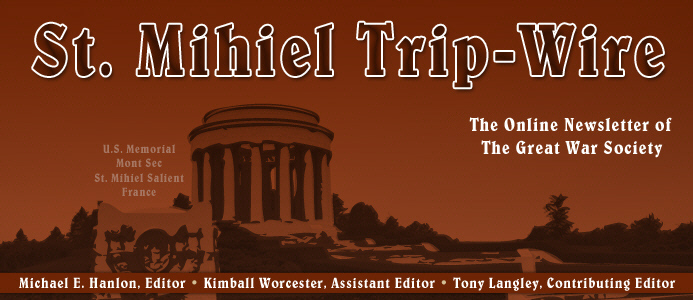

Frank Buckles, Last World War I Doughboy, Is Dead at 110
|
TRENCH REPORT: Sadly, as we were preparing this issue, the news came to us of the death of Mr. Frank Buckles. He was a wonderful representative of America's First World War generation, both dignified and quietly inspiring. . .A few comments and disclaimers about some of our features in this month's issue: 1) Readers of my own magazine know that I have tried to draw attention to the Salonika, or Macedonian Front. Clemenceau's reference to the "Gardeners of Salonika" is one of the most misunderstood quotes of the war. No one there was tending to the gardens in September 1918 when Bulgaria collapsed under Allied pressure opening backdoors into Austria and Turkey. . .1) Regular contributor Christina Holstein has been traveling, so we will miss her feature this month. She has promised, however, a new "Sleeping Beauty of the Western Front" for our next issue. . .3) I am not a drinker of Guinness stout, nor an enthusiast for heavy, room temperature beer. (My preference is for a lager, chilled very close to freezing temperature.) However, I thought the article below from their company Website is a good case study of the ways in which the war affected a large business and its employees.
MH
This Month's Internet Feature
Innovative World War I Websites
Here are some exceptional, high-content (I mean densely packed with interesting information) World War I Websites at the cutting edge of Internet technology
Australia's VC recipients from Australia Today
The First World War from the British National Archives
Early Years Gallery at the U.S. Air Force Museum
Art and the First World War
The Newfoundland Regiment and the Great War
New at Our Own & Our Friends' Great War Websites
Click on Title or Icon to Access
|
Our Friend AEF Historian (and editor-in-chief of George Washington's Papers) Ed Lengel has contributed a great article to the January Military History Magazine on a forgotten episode:
At Great War Society Sites
Major Articles at La Grande Guerra: The Italian Front, 1915-18
At WFA-USA Sites
|

Charles Lindbergh's 1927 trans-Atlantic flight to Paris was begun at Roosevelt Field, Garden City, New York. The field was named in honor of President Theodore Roosevelt's son Quentin, who was killed in action while flying a mission for the 95th Aero Squadron, July 1918. A shopping mall on the site today bears the name "Roosevelt Field".
|
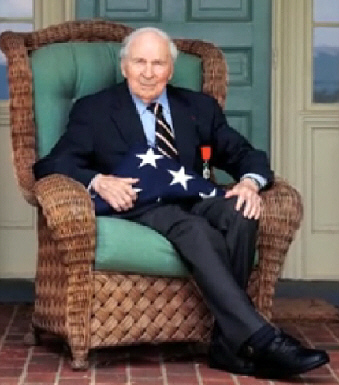
Frank Woodruff Buckles
1 February 1901 -- 27 February 2011
See stories below about America's Last Doughboy
|
GREAT WAR 2011 EVENT CALENDAR
|
A World War I Event Calendar
We will continue to maintain our WWI Calendar. There is simply more information than we can display here on the Trip-Wire. We count on all of you who schedule WWI events to contact us with new and updated information. Next month we will publish the 2011 calendar available to all.
(send an email with schedule information)
|
National World War I Seminar,
9-10 September, 2011
Citi-Garden Hotel
South San Francisco, CA
(Near S.F. International Airport)
(Check Back for Details)
|
WFA-Pacific Coast Branch Annual Seminar
March 4-6, 2011
Bay Street Armory,
Victoria BC
(flyer and registration form)
|
Western Front Association
U.S. Branch Chapter Meetings
Check for Your Region
Regularly Updated (details)
|
Great War Society Monthly Chapter Meetings
Berkeley, San Francisco, and
Palo Alto, CA
Regularly Updated (details)
|
Upcoming Events at the National World War I Museum
Kansas City, MO
New Exhibits and Lectures Scheduled
Regularly Updated (details)
|
Send additions/corrections for our master schedule:
Email Response
|
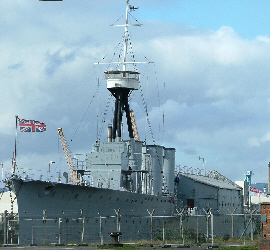
The Light Cruiser HMS Caroline Last Surviving Ship of the Battle of Jutland Was Recently Decommissioned
(Entry in Jane's Fighting Ships of 1919)

What produced the enthusiasm of the first days of the war? . . .Ignorance, love of the dramatic, an accumulated spiritual vitality which found no employment in the things of every day and so was ready for anything out of the ordinary; belief, too, that enthusiasm, given its head, could irresistibly mould events.
Verdun (novel),
Jules Romain,
|
|
|
|
Page Two
|
|
|
 |
The Salonika Front Remembered
The Salonika policy. . .was largely vindicated by the extremely practical test of results.
Winston Churchill, The World Crisis |
The Salonika, or Macedonian, Front is mostly neglected today, except by specialists and the British-based Salonika Campaign Society. But consider: almost all the war's combatants sent forces to the theatre; three quarters of a million men were deployed along its 170-mile front; even down to the 21st century it remains the greatest focal point of debate between the war's "Easterners" and "Westerners", and in fact, it was the front where the collapse of the Central Powers began.
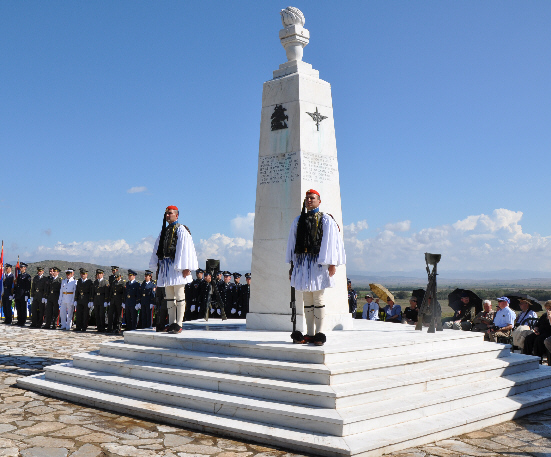
Anglo-French forces began landing at the Greek port of Salonika on 5 October 1915. The troops were sent to provide military assistance to the Serbs, who were threatened by combined German, Austro-Hungarian, and Bulgarian armies. The intervention came too late to save Serbia, and after a brief winter campaign in severe weather conditions on the Serbian frontier, the Anglo-French forces found themselves driven back to a small perimeter around Salonika. At this point the British advised that the troops be withdrawn.
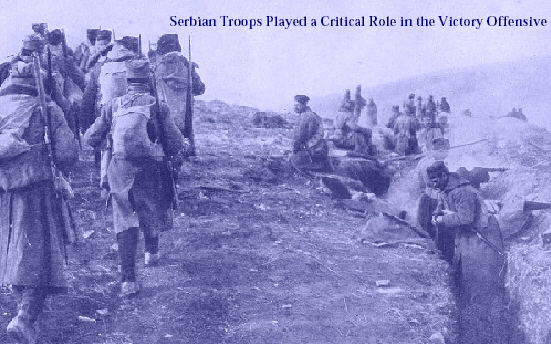
However, the French, with Russian, Italian, and Serbian backing, still believed something of strategic importance could be gained in the Balkans. After preparing the port of Salonika for defence, the troops moved up-country. During 1916, further Allied contingents of Serbian, Italian, and Russian troops arrived, and offensive operations began. These culminated in the fall of Monastir to Franco-Serbian forces during November. A second offensive during the spring of 1917 made little impression on the Bulgarian defenses. The front line remained more or less static until September 1918, when a third offensive was launched. With a breakthrough by Serbian forces west of the Vardar River, the Bulgarian army was forced into a general retreat. The campaign concluded with the surrender of Bulgaria on 30 September 1918.
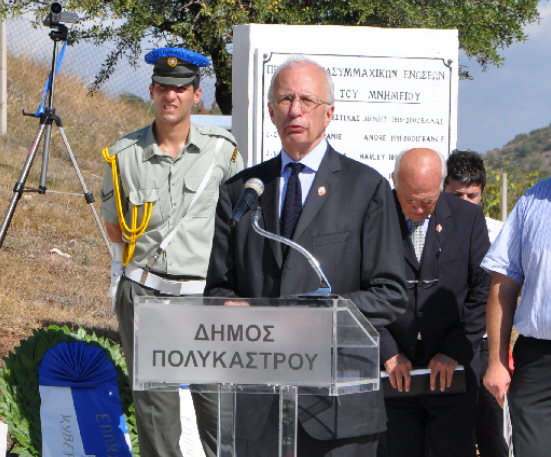
Every year on the last weekend of September the fallen of the Macedonian Front are honored by all the participating nations. 2010 marked the 92nd anniversary of start of the victory offensive. The photos here show the five-sided (hard to see in photo) monument at Polikastro, a town some 50 km northwest of Thessaloniki built by the union of five Allied countries participating in the final campaign. The speaker is Cristian D'Esperay, grandson of the theatre commander, French General Franchet D'Esperay.
Most of the content above from the Salonika Campaign Society, Photos of the ceremony are from Major General Demosthenes (Dennis) Lamprinakis of the Union of the Allied Combatants of Macedonian Front.
|
|
World War I Headlines
in the
21st Century
|
|
|
|
Three by Trip-Wire Readers
It is my policy to support our readers and members of the World War I organizations who make serious contributions to the scholarship and literature of the Great War Here are three works by you fellow readers I recommend to you. They can be ordered at the links provided.
Shooting the Front: Allied Aerial Reconnaissance and Photographic Interpretation on the Western Front - World War I (Paperbound)
Terrence J. Finnegan
Shooting the Front is a pioneering study by retired U.S. Air Force officer Terrence Finnegan on the impact of aerial photography on America's fledgling air force during its baptism of fire above the trenches of the Western Front. This comprehensive history from the Defense Intelligence Agency highlights aerial photography's ability to command the high ground and provide a concise view of a battle area, both tactically and strategically. It is an authoritative account of aerial reconnaissance and the interpretation of photographs as they evolved into the most important sources of intelligence along the entire Western Front during the Great War. The photograph collection is remarkable and the many contributions of the other Allies, especially the French, are covered thoroughly.
Order at: The Government Printing Office
The Scent of Roses in Winter [Paperback]
Michael P. Kihntopf
This is a novel by the chairman of the Southwest Chapter of the WFA-USA and a previously published historian of the Eastern Front. His protagonist in The Scent of Roses in Winter, Edward Klein, has an obsession. Before he dies of cancer in the mid-1960s, he wants to tell his grandson about his life and something more. But before he can do that he has to take a trip though his past. His post-combat stress syndrome, stimulated by sights, sounds, and smells, causes him to relive his life from his boyhood in the Ukraine living in the German colonies, to fighting on the ramparts of Verdun, and participating in the revolutions of 1918 -1921. Tempering this trip are the memories of the trials and tribulations of two marriages.
Order at: Amazon
Civilians in a World at War, 1914-1918
Tammy M. Proctor, Wittenberg University
Professor Proctor argues in her latest work that it was World War I--the first modern, global war--that witnessed the invention of both the modern "civilian" and the "home front", where a totalizing war strategy pitted industrial nations and their citizenries against each other. Civilians in a World at War, 1914-1918 explores the different ways civilians work and function in a war situation and broadens our understanding of the civilian to encompass munitions workers, nurses, laundresses, refugees, aid workers, and children who lived and worked in occupied zones, on home and battle fronts, and in the spaces in between (e.g. refugees and internees). Comprehensive and global in scope, spanning the Eastern, Western, Italian, East African, and Mediterranean Fronts, Proctor examines in detail the role of experts in the war, the use of forced labor, and the experiences of children in the combatant countries.
Order at: Barnes and Noble
|
|
|

Belgian Soldiers Evacuating Wounded Soldier at Nieuport
By Alfred Bastien
|
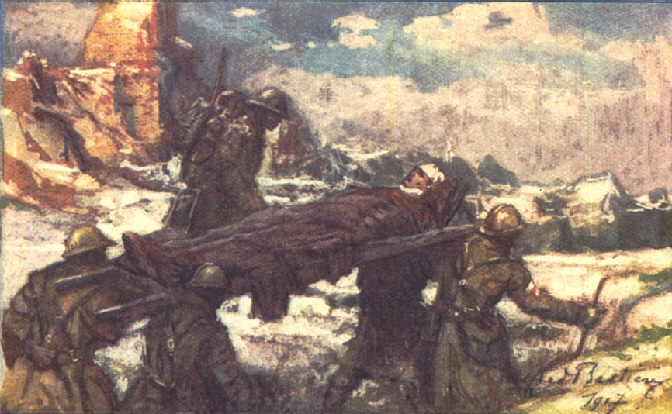
|
Click Here to Visit the Website of Our Contributing Editor Tony Langley
War in a Different Light

|
|
Subscribe to Our Online Magazine
|
|

|
|
|
Page Three
|
|
|
The Guinness Brewery at War
From The Guinness Storehouse
|
By 1914 the GUINNESS Brewery founded in Dublin, Ireland in 1759, had become the world's largest. The total number of staff and employees was 3,650, and taking into account the families of the clerks and workmen, about 11,000 people were dependent on the brewery for their livelihood.
On the outbreak of war in 1914, employees were actively encouraged to join the British forces. The
company ensured that sufficient numbers were retained to enable brewing operations to continue
whilst remaining amenable to petitions to enlist from staff. Over 800 employees served in the British forces in World War One, serving on land, on sea, and in the air all over the world. These men came from all departments in the Brewery from top management to labourers. Men employed at Guinness regional stores in Ireland and England also volunteered. Brewery employees served mainly with the Royal Irish Fusiliers, the Royal Dublin Fusiliers , the Irish Guards, the Royal Army Medical Corps, the Royal Irish Regiment. Several employees were awarded decorations such as the Military Medal, the Military Cross, Croix de Guerre, and the Distinguished Conduct Medal.
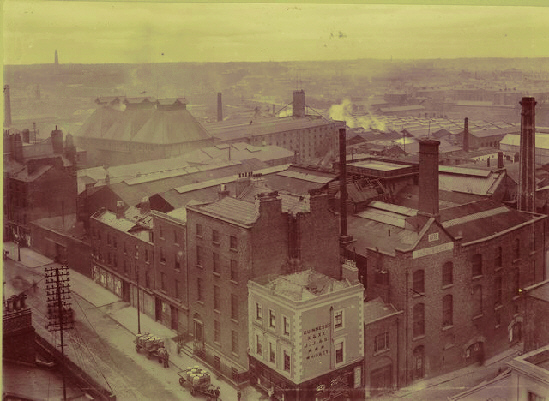
Guinness Brewery at St. Jame's Gate, Dublin, Just Before the War
The company paid half wages to the soldiers' families at home, and their jobs were guaranteed
when they returned. Special "war bonuses" were also paid by the company. A War Gifts Committee
was established in the Brewery to dispatch parcels to men in active service. In December 1920, a Roll of Honour was produced by the company to "preserve, in a suitable form,
a record of those. . .who gave their services -- and in many instances -- their lives -- for the defence
of the Empire". Out the 800 men who left the company, 103 did not return.
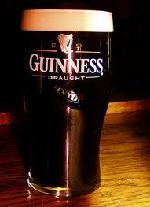
|
The war also affected the daily operations of the Brewery in Dublin. The Company lent motor
vehicles to military authorities "in case of national emergency," and horses and motor vehicles were sold to the Government. The Company lost her first steamship, S.S. W.M. Barkley, during the War. The ship was acquired in 1913 and used for carrying barrels of Guinness stout to ports in England. On 12 October 1917, the W.M. Barkley was torpedoed and sunk off the Kish Lighthouse in the Irish Sea. Five Guinness crewmen perished and seven crew were rescued.
The War also had an effect on the supply of Guinness stout. Barley growing was restricted by
the government as land previously used to grow barley was increasingly required for growing
foodstuffs. This resulted in a reduced availability of one of the key ingredients in Guinness stout. The government also laid down restrictions on the amount of beer that the Brewery was allowed to produce, which directly affected the strength of the beer brewed. Restrictions on quantities were not lifted until 1919, and restrictions on the strength of beer were not lifted until 1921.
|
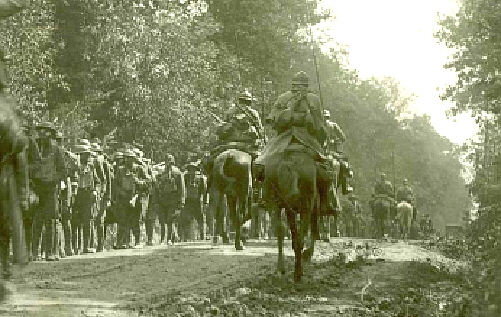
Signal Corps Photo of U.S. Troops Advancing to the Front in Gas Masks
|
|
|
 |
One "Hot Off the Presses" and One We Overlooked Back Then
Two Works Our Reviewers Strongly Recommend
|
Captured Memories, 1900-1918: Across the Threshold War
By Peter Liddle
Reviewed by James J. Cooke, F.R.Hist.S.
Three years separate us from the centennial of the outbreak of the Great War in 1914, and precious few are the voices which can tell us about those four years of worldwide conflict. What remains for us are the collections of letters, diaries, and interviews. Peter Liddle has compiled a volume of those memories, collected over his many years of fruitful scholarship and lucid writing. Over 40 years ago Peter Liddle began collecting and recording those who played a role in the Great War, and he assembled them in the Liddle Collection housed in the Brotherton Library of Leeds University. Dr. Liddle was one of the first to understand that World War One went beyond the trenches of the Western Front, to the heat of Mesopotamia, to the beaches of Gallipoli, and the waters of Jutland. Great battles, military and political leaders (some gifted, many not) and world-shaping revolutions arrest the attention because of their magnitude and the shaping of the post-war world. That war, however, deeply affected all levels and activities of society from the middle class and workers to those women seeking the vote and an expanded role in society. Of what possible impact would the life of a certain Tom Easton, a miner in Northumberland, have on the history of the Great War? Conditions and changes in labour in the mines would certainly be of concern to a nation who would need that commodity during the war. Easton, as he told Liddle, left the mines to join the army in November 1914.
In 1977 Liddle interviewed Major-General R.C.Money at his home in Hertfordshire, who saw service in South Africa and then served in the Great War. His memories of conditions on the Western Front bring into focus the attitudes of the officer serving in various areas of the war. One is struck by the fact that the interview with General Money occurred over 30 years ago, but now that voice is silent. General Money's experiences and insights have been saved for us because Peter Liddle preserved and now presents his interview. Of particular interest is the interview with General Sir James H. Marshall-Cornwall, who was an intelligence officer on the Western Front. Too often students of the Great War tend to focus on the great battles on land, sea, and air and forget that that there are many staff officers without whom battles could not be engaged. Of course the common soldiers in the ranks are not forgotten, and they are well represented by Liddle in this book.
Every entry in this book adds to the study of the Great War because it does cover the diverse aspects of the war. The focus of the work is England over an 18-year period, and it tells us
much about the nation with whom the United States would ally in the two wars of the last century. Each entry begins with a short introduction by Dr. Liddle detailing when and where the interview took place. He tells us about the person, adding a distinct human touch.
This book makes a serious contribution to the history of the Great War, but one expects that from Dr. Peter Liddle. Liddle's life work can be found in his many volumes and in the Liddle Collection at Leeds University. In addition to his work in World War One he has gone on to be the founder of the Second World War Experience Centre, which is fast becoming a major archival repository, and, as one would imagine, a repository filled with Liddle interviews. This is an important work which should find favour with all those who are interested in the Great War
The Kaiser's Army: The Politics of Military Technology in Germany During the Machine Age, 1870-1918
Eric Dorn Brose
Reviewed by Len Shurtleff:
In this artfully crafted, extremely readable, and carefully researched volume, Dr. Brose argues and documents a thesis that resistance to change driven by technological innovation seriously undermined the German army during WWI. Continual feuding within and among army branches (artillery, infantry, cavalry) slowed the adoption of new weaponry and tactics. The Kaiser, and much of the cavalry and infantry establishment clung to massed attack (shock formations) used during the 19th century Wars of Reunification.
They seemed to view technology as undermining troop morale and doing away with the manly art of war as practiced against the French in 1870. The cavalry was slow to adapt to reconnaissance and screening roles; the infantry was loath to adopt magazine rifles and machine guns; and the artillery was bitterly divided among those favoring light, mobile, flat-trajectory field pieces, heavier high-angle fire howitzers, and fortress-busting large-caliber guns. Even more significant, the mercurial Kaiser Wilhelm II insisted on deciding many issues himself and on conducting military maneuvers that featured colorful but outmoded massed cavalry charges. His interference drove a succession of army staff to distraction and ultimately resulted in his marginalization after 1905.
By 1910 many of these weaknesses had been corrected. For example, the 1909 army regulations updated those in force since 1870. And, a new, rapid-firing 77mm field piece had been fielded to compete with the superb French 75mm cannon. Strategic planning for war with France and Russia solidified around the Schlieffen Plan and work to develop costly, fixed frontier defenses abandoned. Still, reform was adopted piecemeal and only accelerated by the jolts provided after 1905 by war between Russia and Japan, the Austrian occupation of Bosnia and successive Moroccan crises. In sum, Brose finds that muddled tactical and technological decision making in the pre-war years condemned to failure Germany's plan for a quick victory in 1914. Backward-looking prejudices accumulated during four decades of peace could not be reformed in time for victory. Moreover, the muddled German command structure, divided as it was among the general staff, the Ministry of War and the Kaiser's personal cabinet, was unequal to the task of either preparing for or conducting a modern industrialized war.
|
|
|













